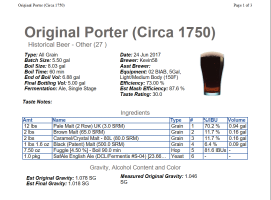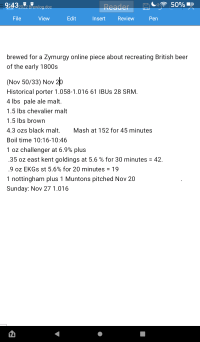Fellow brewers and brewerettes,
What is your favourite historical UK (London?) porter recipe from the Victorian era that you have successfully brewed?
I need some inspiration.
Thank you very much.
M
What is your favourite historical UK (London?) porter recipe from the Victorian era that you have successfully brewed?
I need some inspiration.
Thank you very much.
M
















































![Craft A Brew - Safale S-04 Dry Yeast - Fermentis - English Ale Dry Yeast - For English and American Ales and Hard Apple Ciders - Ingredients for Home Brewing - Beer Making Supplies - [1 Pack]](https://m.media-amazon.com/images/I/41fVGNh6JfL._SL500_.jpg)











 I'll apologize first.
I'll apologize first.

